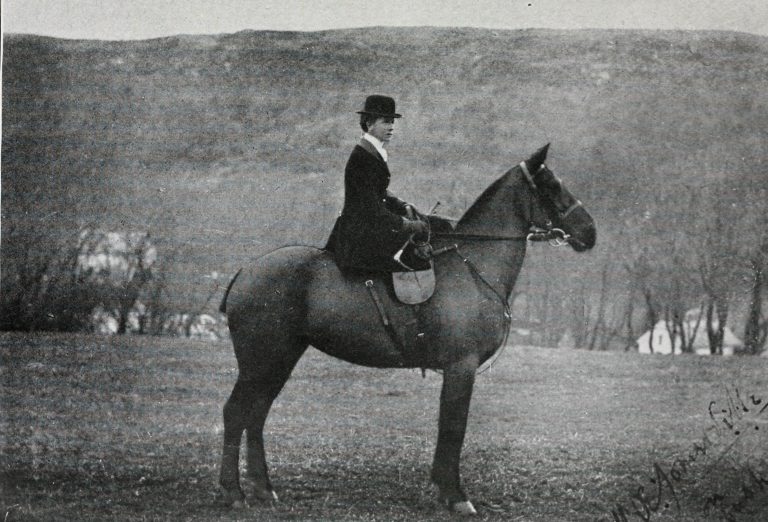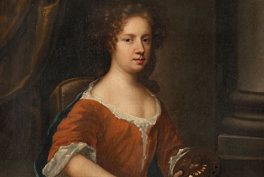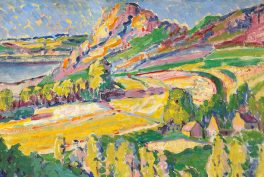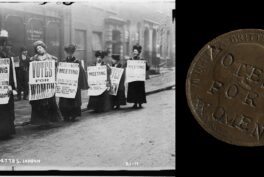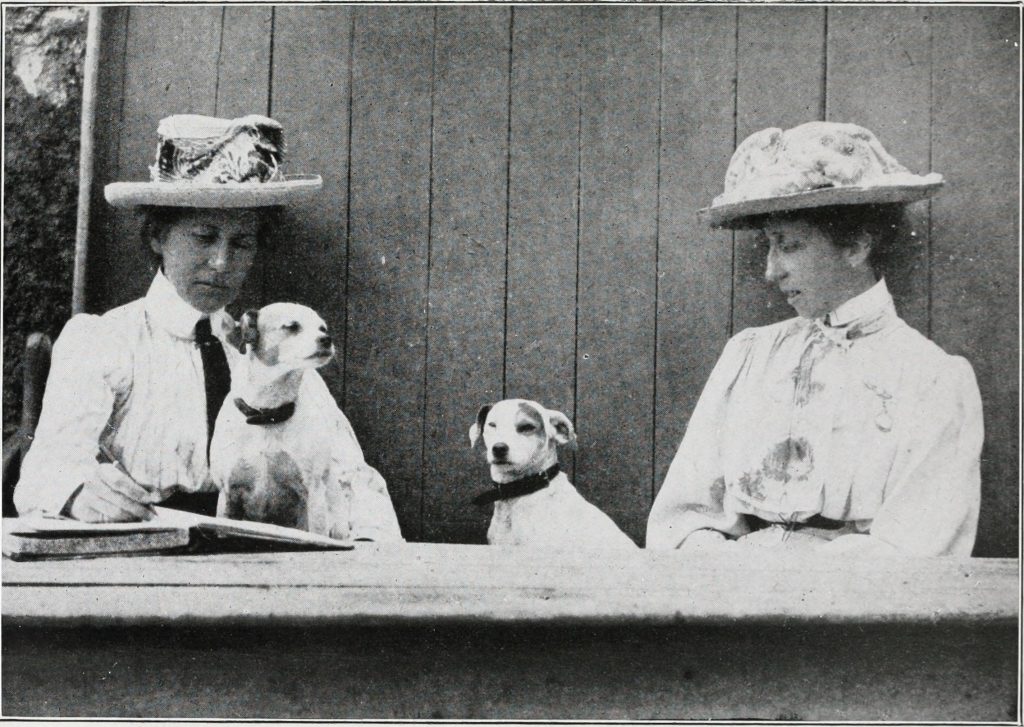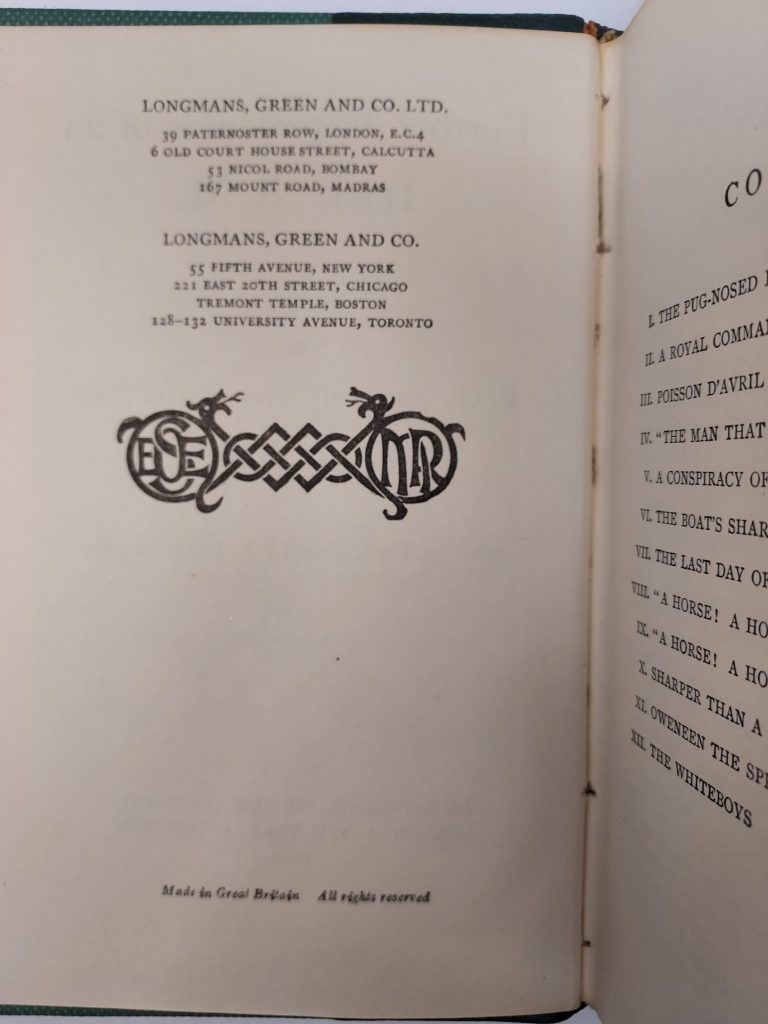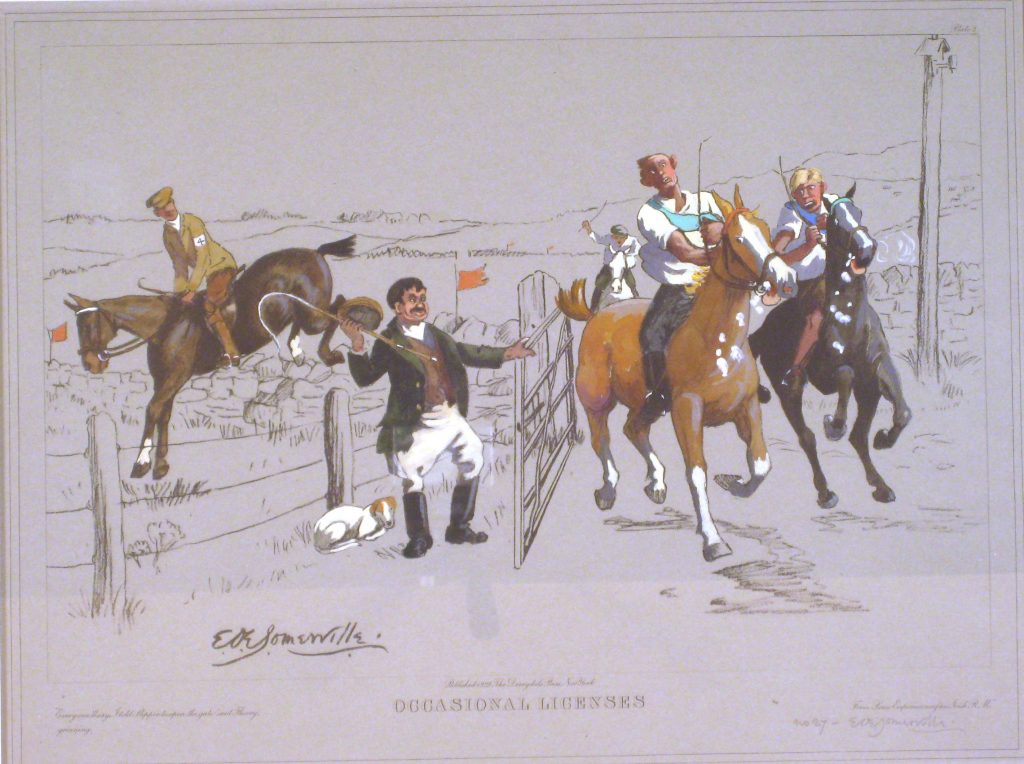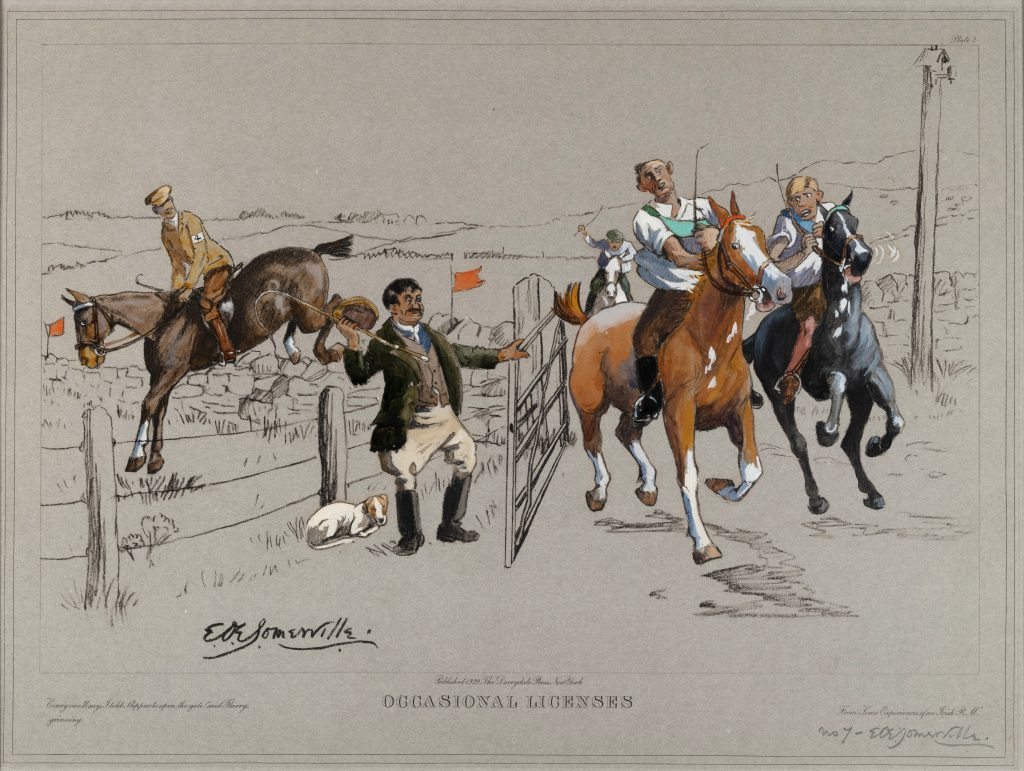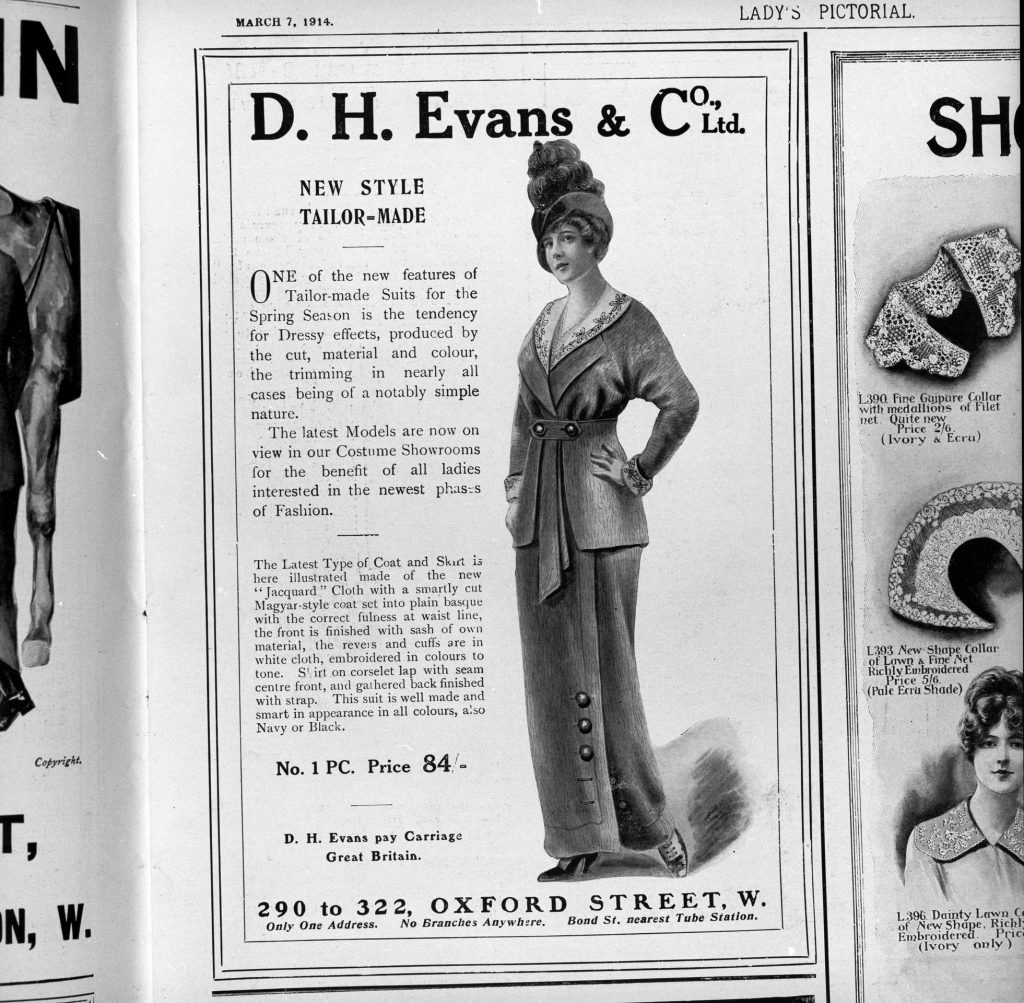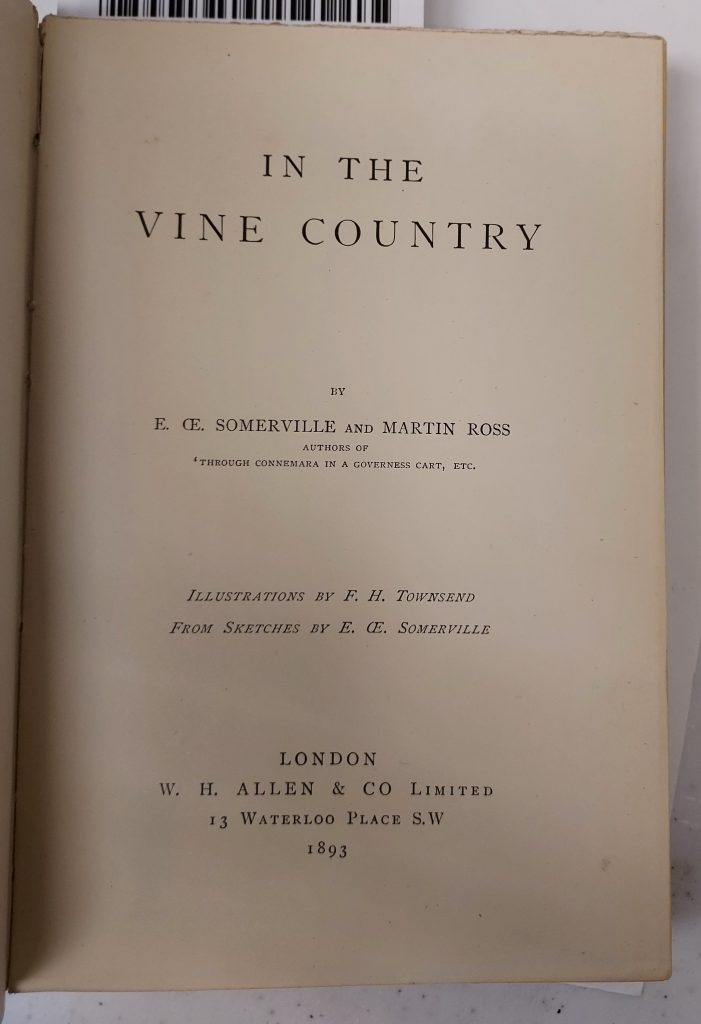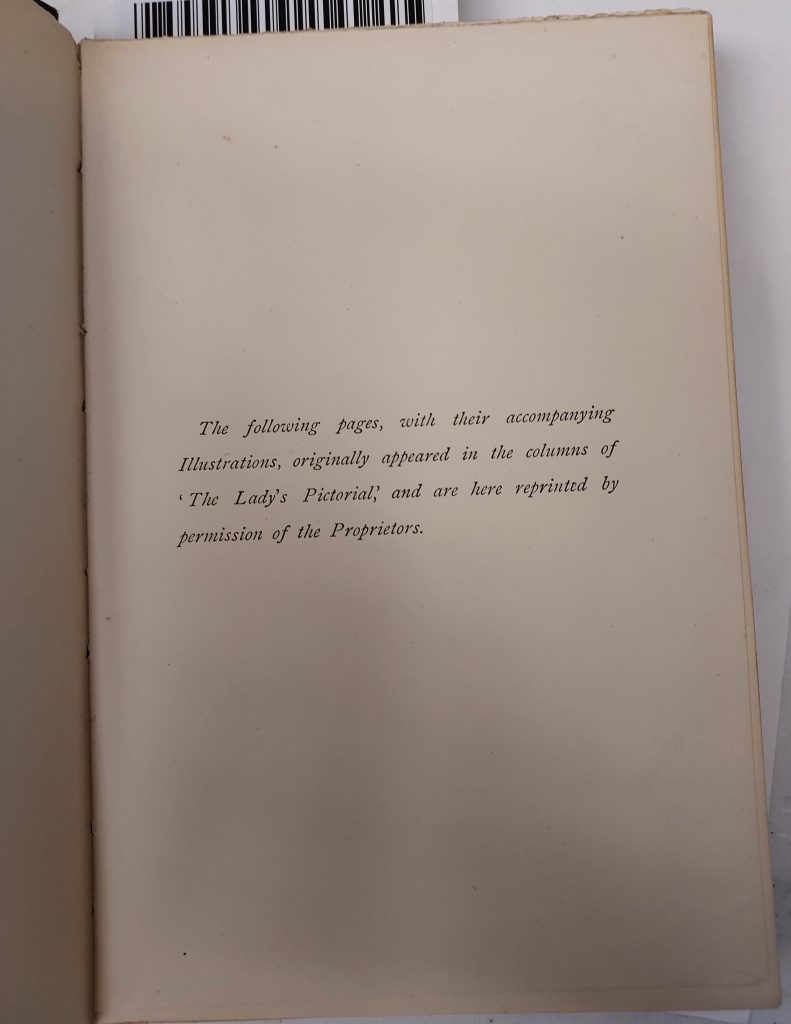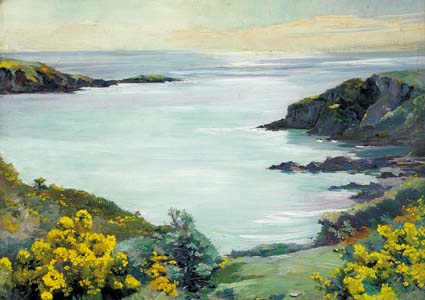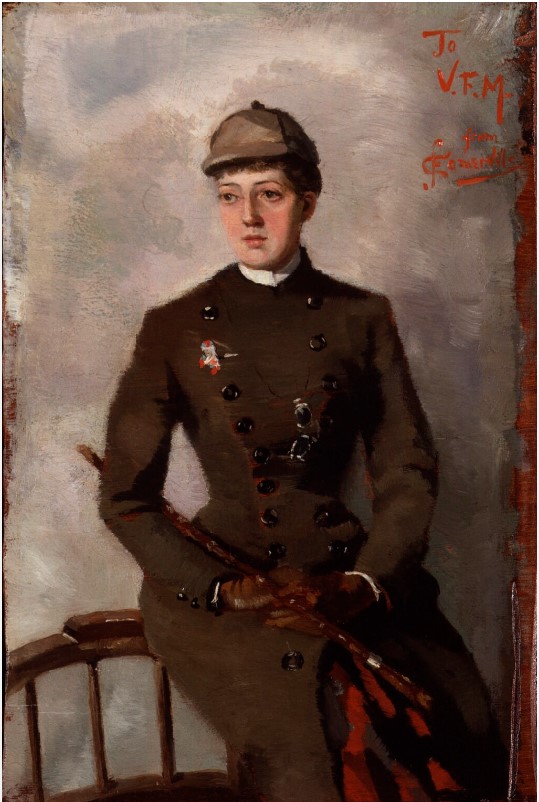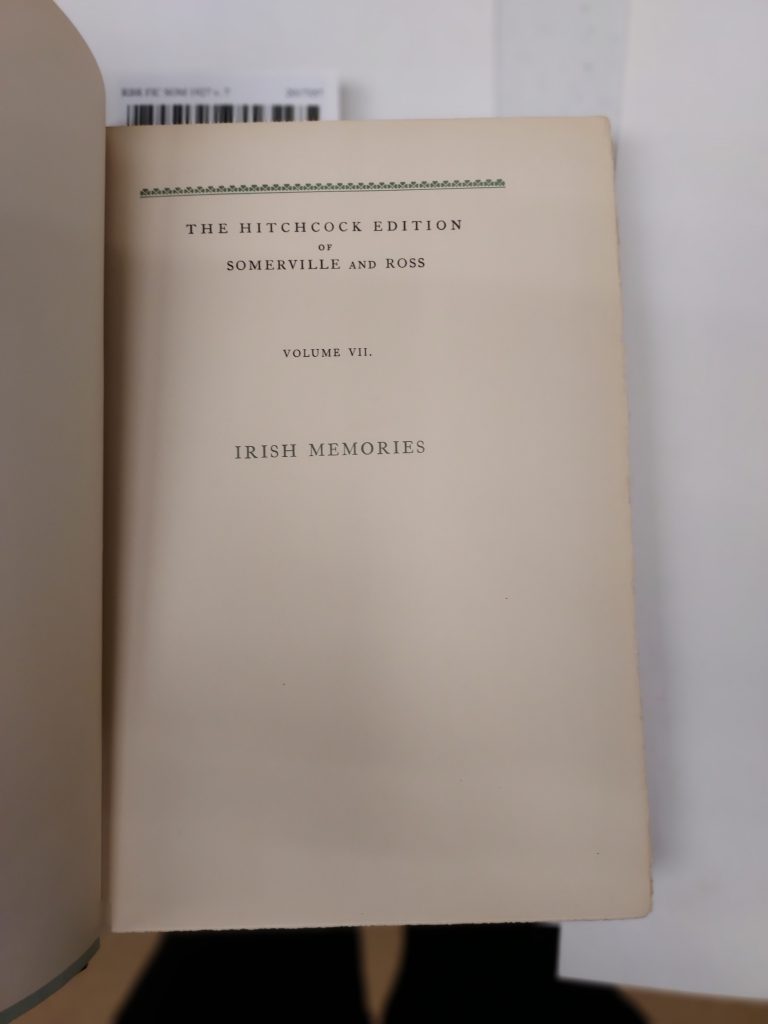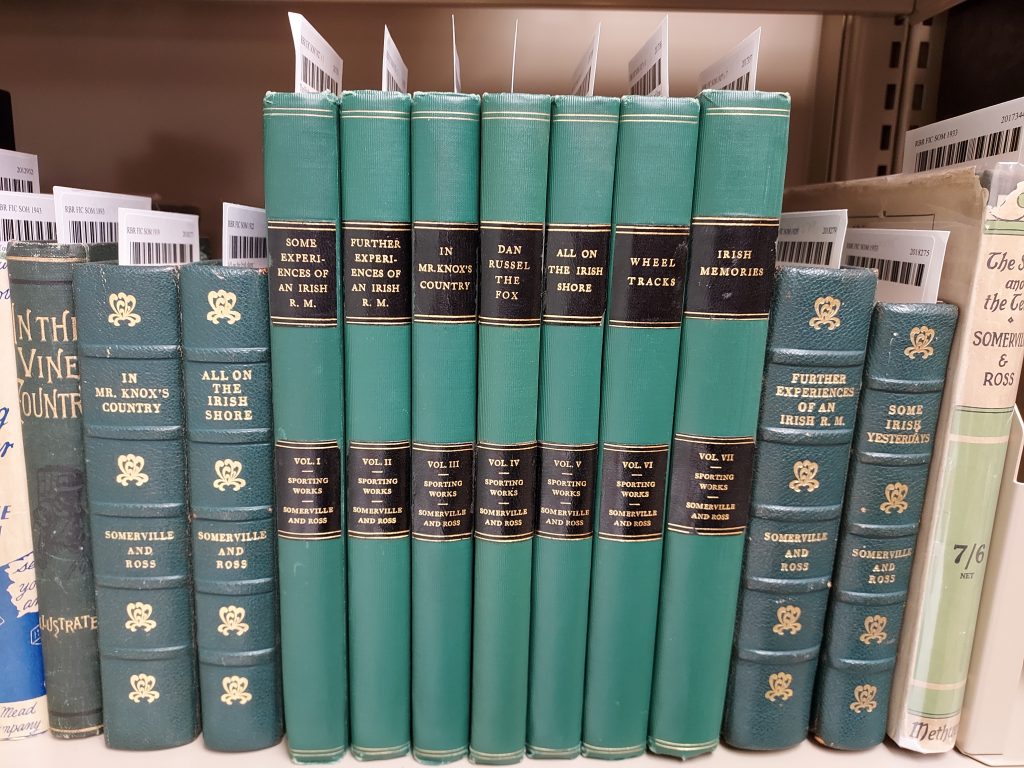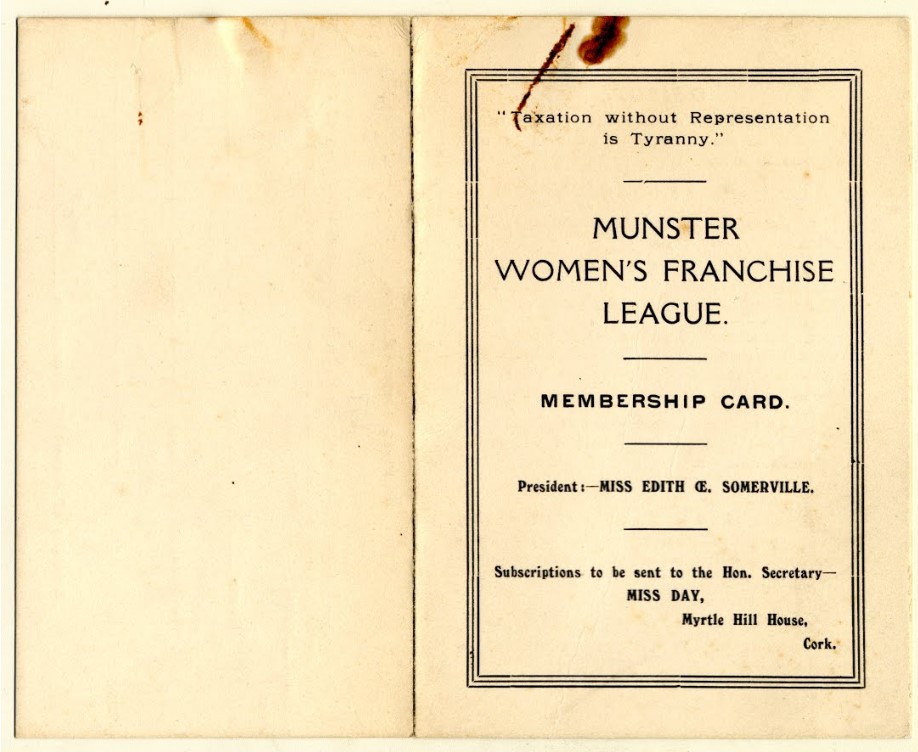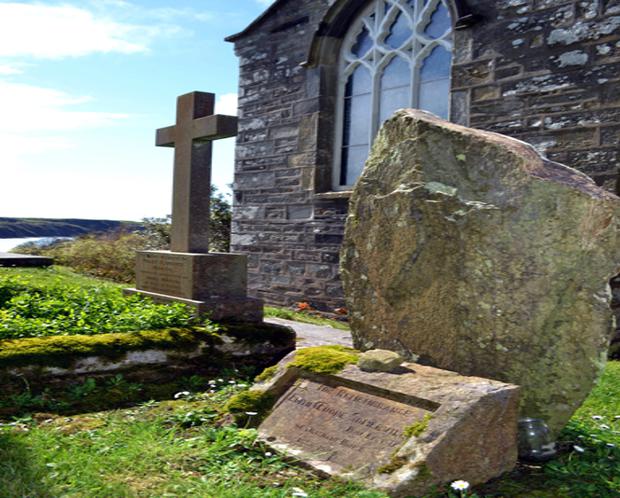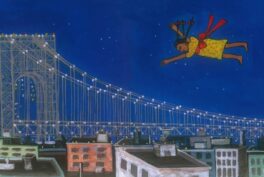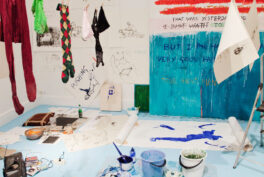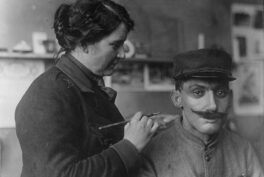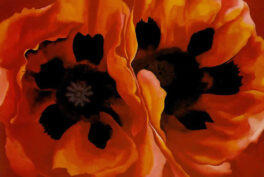Born in 1858, Edith Somerville grew up in Ireland as the eldest of eight children. After being tutored at home, she attended South Kensington School of Art in London, Alexandra College in Dublin; Académie Colarossi and Académie Delécluse in Paris; and then the Westminster School of Art, also in London.
When she was in her late 20s, Somerville met her second cousin, Violet Martin. It must have been a fortuitous introduction, as only a few years later, the first of their numerous publications was released. Their first book, An Irish Cousin, was published in 1889. Their books Some Experiences of an Irish R.M. (1899), Further Experiences of an Irish R.M. (1908), and In Mr. Knox’s Country (1915) comprise what is collectively known simply as “Irish R.M.” Our British friends may recognize the title as it was turned into a television series in 1983. The Real Charlotte published in 1894 is seen as their masterwork and they, apparently, took a little inspiration from their own lives for subplots and details within the book.
Their joint pen name underwent a few iterations, including “Martin Ross” for Violet Martin, but they’re generally referred to as “Somerville and Ross” (“Ross” refers to Ross House, Martin’s childhood home). Their collaboration resulted in 14 novels, several short stories, and travel books, as well as myriad essays and articles.
In addition to her work as a writer, Somerville served as an illustrator to her literary works. However, she didn’t illustrate her novels just because she could, she was a competent and successful artist in her own right. Below are two of her illustrations for the Irish R.M. books in the collection of the National Sporting Library & Museum (NSLM) in Middleburg, Virginia. The NSLM actually has two sets of the same illustrations: one set of four is labeled “number 7” and the other is “number 27” in the limited series produced by Derrydale Press. The tonalities between the sets vary slightly, which is neat to see.
Somerville was also an illustrator for popular publications Lady’s Pictorial and The Graphic. Magazine illustrations are hard to identify since they aren’t usually signed. This is a representative image of Lady’s Pictorial advertisement:
She also wrote for Lady’s Pictorial which was then turned into a book, In the Vine Country. The illustrations for it were produced by another artist but based on Somerville’s sketches.
